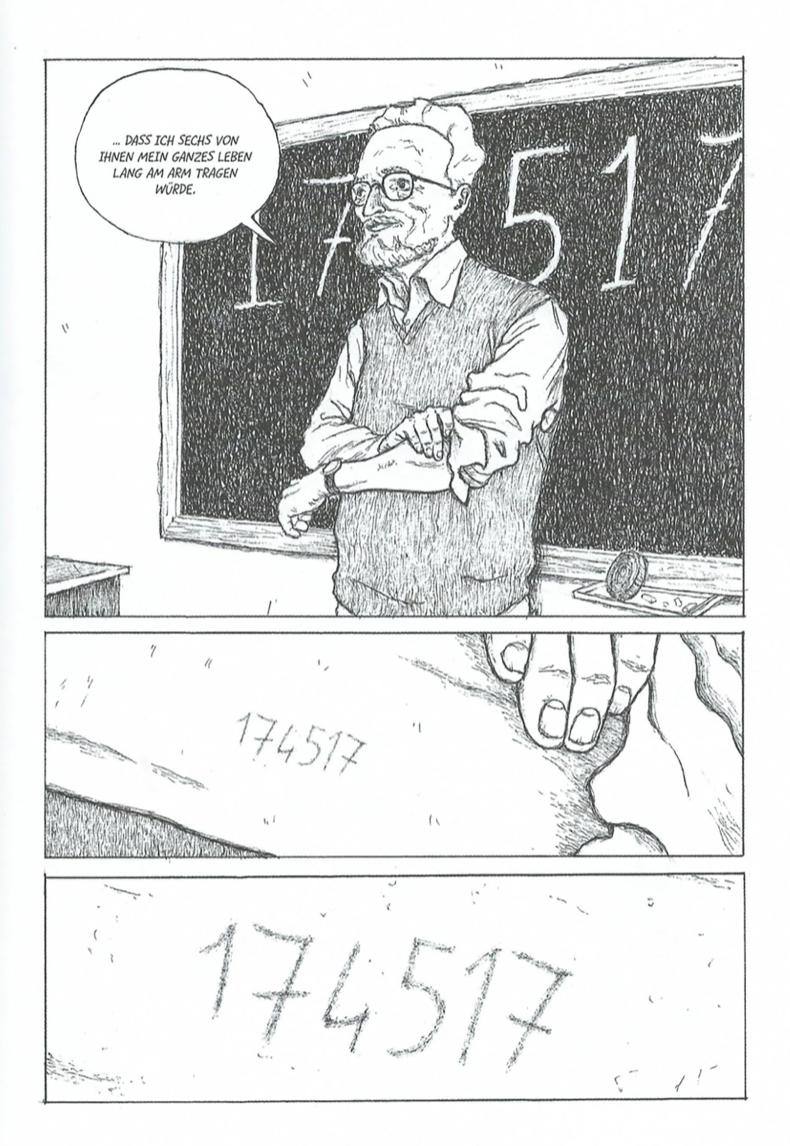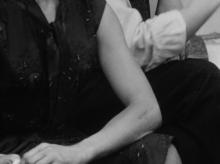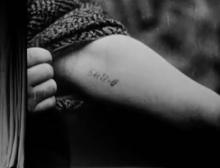Primo Levi

Matteo Mastragostino & Alessandro Ranghiasci: Primo Levi, bahoe books, 2019 (2017)
Matteo Mastragostino and Alessandro Ranghiasci’s graphic novel Primo Levi opens with Levi meeting students at the Rignon elementary school in Turin a few months before his death. This meeting constitutes the narrative framing of Levi’s life story that culminates in the time he spent in the Auschwitz III Monowitz camp as a prisoner.
Levi starts his story by writing his personal prisoner number on the class chalkboard, the same number that is tattooed on his arm. He tells the class that when he was their age, he used to love numbers, and in this illustration, he confesses, “but I couldn’t imagine that I will carry six of them on my arm for all of my life.” Mastragostino and Ranghiasci make an indirect use of the original footage in this illustration, especially of the shots of children revealing their forearms. The previous page shows the numbers in close-up, then reveals the setting: a classroom. What looks like an ordinary math lesson turns into a triggering moment when the reader sees a close-up of Levi rolling up his sleeves, even emphasizing the rustling, as it can be seen in the sequence of the children in Auschwitz.
On the next page, we first see a medium shot of Levi showing his number, then a close-up on the arm that evokes the shot from the Auschwitz sequence, and finally, an extreme close-up that focuses closely on the number.
This illustration is a mimetic allusion to the original shots, generically illustrating Primo Levi as a Holocaust survivor, showing his Number Tattoo to children. The revealing and showing of the tattoo bear the relation of a configurational analogy to the original footage, here used as a triggering image, as through the numbers and the revealing of his tattoo, Levi recalls memories from the Holocaust.




